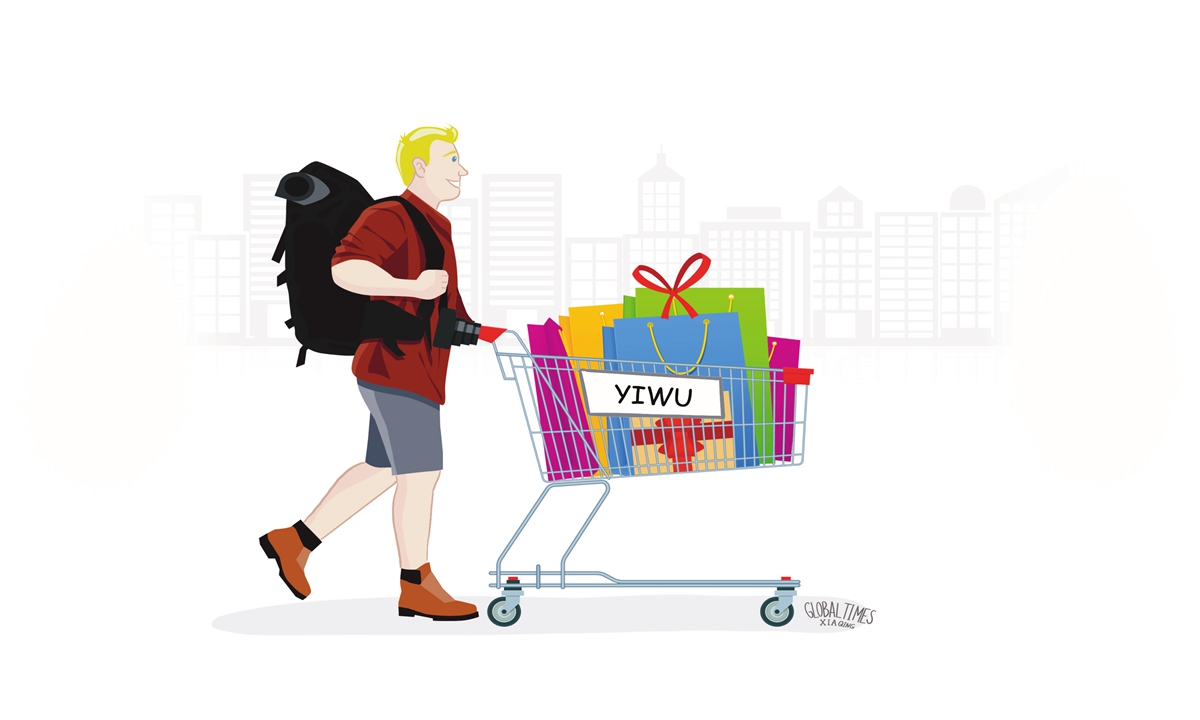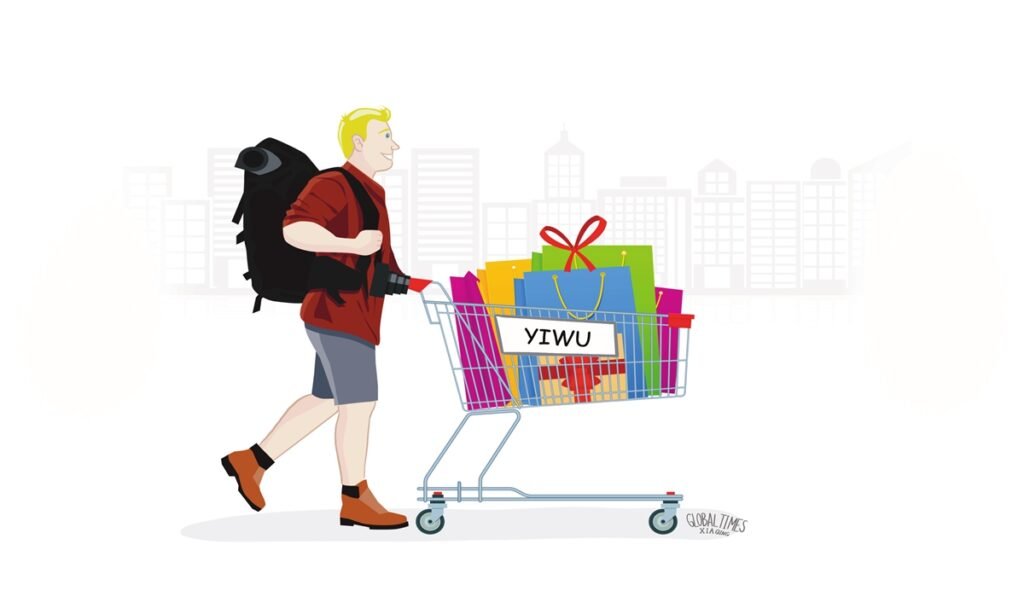
Illustration: Xia Qing/GT
As the clock approached 3 pm, a flight touched down at Yiwu airport, East China’s Zhejiang Province, and among the passengers disembarking, a noticeable one-third were international faces. This scene, reported by the Xinhua News Agency on Sunday, is part of a broader trend observed this summer, where Yiwu, known as the world’s capital for small commodities, is becoming an increasingly popular destination for international visitors, drawn by its unique blend of “tourism plus shopping.”
A staff member at Yiwu airport noted that in previous years, there weren’t many foreign travelers in the summer. However, this year is different. For instance, the Yiwu to Guangzhou route saw a significant increase in foreign passengers, reaching 25,700 in July, up from fewer than 10,000 in July of last year. An Azerbaijani buyer mentioned that he knows dozens of people who have already visited Yiwu, some for tourism and others for purchasing goods, Xinhua reported.
Clearly, Yiwu’s “tourism plus shopping” model is increasingly attracting foreign visitors. Some of these tourists include Yiwu as a stop on their tour of China, entering the country through cities like Shanghai and then adding Yiwu to their itinerary for shopping.
Yiwu, also referred to as the “world’s supermarket,” is home to a commercial hub that reportedly hosts about 75,000 merchants. The extensive range of products available there is exported to more than 230 countries and regions. This one-of-a-kind business setting has transformed the small city into a unique tourist attraction.
Earlier this year, Yiwu was selected as a pilot city for innovative development in inbound tourism in Zhejiang Province. To support this move, several measures have been introduced to boost international tourism.
Between January and May, Yiwu welcomed more than 249,900 international visitors, up 18.62 percent year-on-year. To encourage spending by foreign tourists, Yiwu has set up 16 “instant tax refund” points. At these locations, visitors can immediately receive a refund in yuan for the tax on eligible purchases, promoting consumer activity, according to the People’s Daily.
Changes have also come from the Yiwu International Trade City. In the toy section, many merchants have adopted a flexible business model that combines wholesale and retail. This approach enables tourists to benefit from the cost-effectiveness of buying individual items at wholesale prices.
Yiwu is actively working to transform its shopping advantages into tourism resources to attract international visitors. The anticipated growth in inbound tourism is expected to provide international tourists with a high-quality shopping experience while also generating increased tourism revenue for the city.
The development of Yiwu’s “tourism plus shopping” model is supported by its unique strengths, such as being a global hub for small commodities and having efficient logistics. The integration of these features with tourism offers a new perspective on inbound tourism in China.
In recent years, “China Travel” has garnered significant attention. According to a report by the China Tourism Academy, in 2024, China welcomed a total of 131.9 million inbound tourists, a 61-percent increase from the previous year.
The growth in inbound tourism has been driven by various efforts, including the facilitation of visas, payments, and accommodations. More importantly, this trend reflects the ongoing development and optimization of China’s tourism services.
Every Chinese city, regardless of its size, has its own unique characteristics, and these traits could be transformed into distinctive attractions for foreign tourists. The “tourism plus shopping” model may not be suitable for every Chinese city. But as inbound tourism continues to grow, we might see the emergence of more “tourism plus” models, such as tourism combined with sports, cuisine, healthcare, education, and more.
This “tourism plus” model further demonstrates that what attracts international visitors to China is not just its natural landscapes, but also its vibrant modern industrial capabilities. This is becoming a new driver of growth for inbound tourism in China and presents new opportunities for Chinese cities to further explore their unique strengths and enhance their tourism offerings.
The author is a reporter with the Global Times. bizopinion@globaltimes.com.cn

